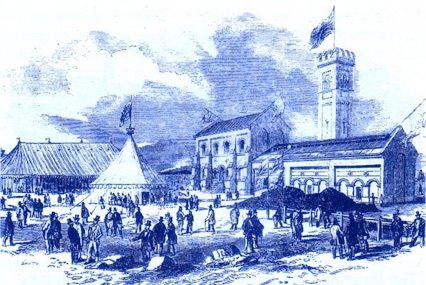Welcome to our comprehensive exploration of the fascinating journey of London’s water infrastructure. In this article, we will dive deep into the historical evolution of the city’s water supply system, from the early days of manual pumps to the modern network of pipes that ensures clean and reliable water to millions of residents and businesses. Join us on this captivating journey through time and witness the remarkable advancements that have shaped London’s water infrastructure.
The Early Days: Manual Pumps and Public Wells
Centuries ago, before the advent of advanced water distribution systems, Londoners relied on manual pumps and public wells to satisfy their water needs. These pumps, operated by hand or foot, were scattered across the city, providing limited access to water. However, the demand for clean water grew as the city’s population expanded, and it became evident that a more robust solution was required.
The Birth of the Waterworks Companies
In the early 17th century, the concept of waterworks companies emerged as a means to address the growing water supply challenges in London. The first company to take charge was the New River Company, established in 1609. Their innovative solution involved constructing a canal-like waterway to bring fresh water from springs in Hertfordshire to the heart of London.
The Golden Age of Engine-Powered Pumps
With the Industrial Revolution in full swing during the 18th and 19th centuries, London witnessed a significant shift in water infrastructure technology. Engine-powered pumps began to replace manual pumps, revolutionizing the water supply system. These pumps, driven by steam engines, increased the efficiency and capacity of water extraction, allowing for a more reliable and widespread distribution of water throughout the city.
The Victorian Era: The Great Stink and the Birth of the Sewer System
The mid-19th century marked a crucial turning point in London’s water infrastructure history. Rapid urbanization and poor sanitation practices led to the infamous “Great Stink” of 1858, a severe water pollution crisis caused by the untreated discharge of sewage into the River Thames.
This public health disaster prompted the construction of the magnificent sewer system designed by Sir Joseph Bazalgette. This groundbreaking project involved the creation of an extensive network of underground sewers that effectively diverted sewage away from the river, vastly improving public health and sanitation in the city.
The Waterworks Act of 1902: Consolidation and Modernization
In the early 20th century, the Waterworks Act of 1902 brought about significant changes in London’s water industry. This legislation led to the consolidation of water supply companies and the establishment of the Metropolitan Water Board (MWB) in 1903. The MWB took over the responsibilities of water provision and embarked on a mission to modernize and expand the water infrastructure.
The Post-War Era: Advancements in Water Treatment and Quality
Following the devastation of World War II, London faced the need for further improvements in its water infrastructure. The development of advanced water treatment technologies played a crucial role in ensuring the delivery of safe and clean water to the growing population.
In the 1960s, the MWB introduced the first large-scale water treatment plant in London, utilizing processes such as coagulation, flocculation, sedimentation, and filtration to remove impurities and contaminants. This technological advancement significantly enhanced the quality of tap water, providing Londoners with an even higher standard of drinking water.
The Present: A Network of Pipes and Reservoirs
Today, London’s water infrastructure is a marvel of engineering, consisting of an extensive network of pipes and reservoirs that supply water to millions of people. The Thames Water, formed in 1974, currently holds the responsibility for water supply and wastewater management in the Greater London area.
The network of pipes spans thousands of kilometers beneath the city, ensuring a constant flow of water to households, businesses, and public facilities. Moreover, strategically located reservoirs act as storage and buffer systems, ensuring a reliable supply even during times of high demand or emergencies.
Conclusion
The transformation of London’s water infrastructure has been a remarkable journey, driven by the need to meet the ever-growing demands of a bustling metropolis. From the manual pumps and public wells of the past to the modern network of pipes and advanced treatment facilities, London’s water supply system has evolved to provide clean and reliable water to its residents.
As we reflect on this journey, it is evident that the constant pursuit of innovation, combined with a commitment to public health and environmental sustainability, has been the driving force behind the success of London’s water infrastructure. Today, we can appreciate the fruits of centuries of progress, knowing that London’s water supply is among the best in the world, ensuring the well-being and prosperity of its inhabitants for generations to come.
